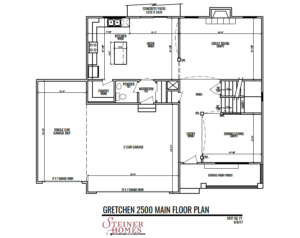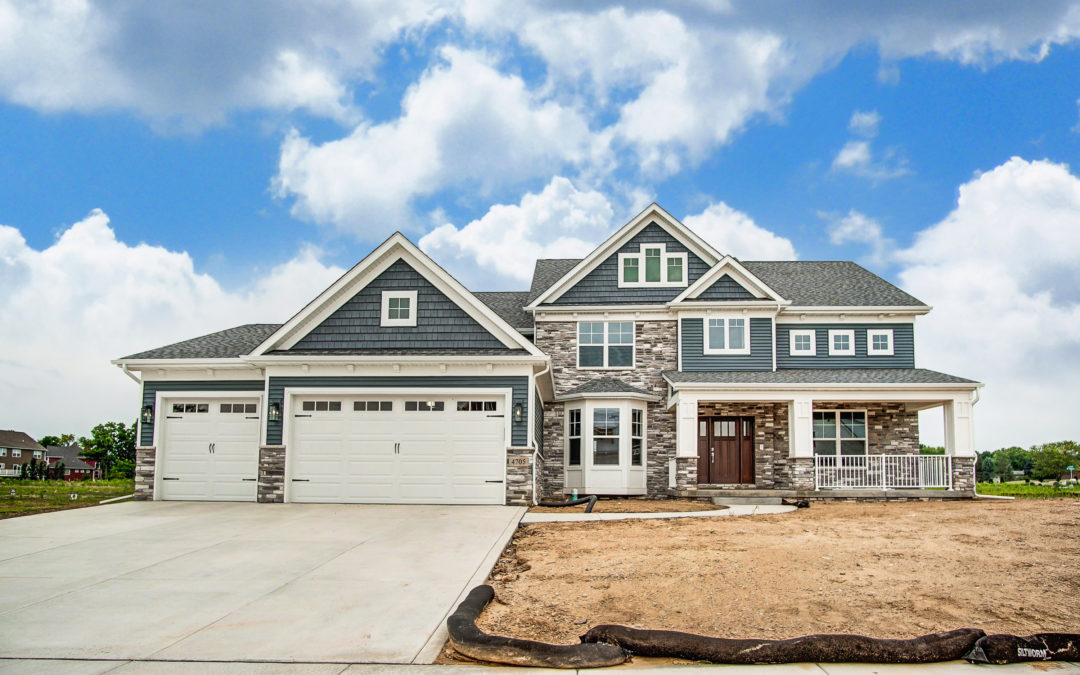A custom home is, by definition, a house that was designed and built for a specific client and for a certain location. Although the idea of a personalized home is appealing to many of us, we often end up choosing yet another production home, compromising on a number of issues. Luckily, though, with a little research and planning, you can have your dream home and it will be exactly how you envisioned it.
Step 1: Preparation

The best way to make sure you’ll have your ideal custom home is by thoroughly planning beforehand. You should start your research as far in advance as possible and analyze the various elements that make up your idea of a perfect home. You can do that online and by browsing architecture magazines, but it’s also a good idea to visit as many completed homes as possible, as it’s much easier to spot certain details in person. You should also have a talk with an interior designer, so you can gather basic knowledge on architectural styles, floor plans, and other similar concepts.
Once you have a pretty clear idea of what you want, it’s time to start looking for the people who will build it for you. Ask around locally for builder references. Once you narrow the list down to a few company names, ask them to make you an offer regarding how much it would cost to build your custom home. It’s good to remember that some builders also offer design and architectural services, which may save you time. Once you’ve chosen a custom home builder, make sure you contact their subcontractors to get some feedback regarding their professionalism.
Now that you have someone to build the house for you, it’s time to complete the preparation phase by choosing the ideal location. Everyone has different criteria when it comes to their perfect location for a home, so decide what yours are and start looking for available land. However, before deciding on a purchase, you should hire a professional to assess and evaluate the land, just to make sure that its price is a realistic one and all the utilities and amenities necessary for a home are already in the area.
Step 2: Discovery
The discovery phase is the part of the custom home building project where the client meets the representatives of their home building company, to discuss and plan all major elements of the construction. Usually, the custom home builder will try to find out what your needs, preferences, and wishes are, giving them a rough idea of how their next project will develop. They should also show you pictures and information regarding other homes they’ve built, so you can maybe identify certain elements that you like and that you don’t like.
You can typically use the construction company for more than that, as they can help you find an ideal building spot, assist you in hiring an architect, and even help you get a loan to finance your project. It’s important that you use a company that understands how important every decision is for you and that doesn’t rush you. They can also assist you with the post-construction cleanup, so you may want to consider including that in your contract with them.
Step 3: Budgeting and Design
After making all necessary preparations, it’s time to decide on various design elements for your custom home and creating a budget. The two usually go hand in hand, as the budget is determined according to the chosen design elements. Agreeing on various options, establishing a budget, and finalizing floor plan ideas can only be done after repeated discussions with the architecture and design team, as they can tell you what the cost-benefit ratio is for each choice, helping you make balanced and informed choices that allow you to stick to your overall budget.
It’s estimated that a custom home requires at least 40 to 50 major decisions that need to be taken by clients with the help of designers and architects, so there will be plenty of homework for you to do if you want to know exactly what you’re deciding on. Their large number, high complexity, and importance make this stage of the custom home building process a crucial one, as you will be making design decisions for nearly every room in the house – including the kitchen, living room, master suite, and more – that you have to live with for years to come. Some people take years to decide how their home should be, so take your time.
Step 4: Construction
Once every detail is settled, the actual construction can begin. In most situations, the more you focus on doing a thorough job planning your custom home, the quicker and hassle-free its actual construction is likely to be. A custom home takes about a year on average to be built, with building times typically ranging from six to 18 months. Given the complexity of the project and the many elements involved, there are many factors that can delay the building process, but none of them should occur if you have done your research and know exactly what you want.
The main elements that you should monitor during the building process are:
- Liability and insurance: Make sure the contractor has general liability and workman’s compensation insurance, to save you from potential hassles.
- Necessary permits: Make sure that your contractor has all the correct permits for every stage of the construction, so you can avoid any delays or extra fees.
- Inspections: The contractor is usually required to schedule regular inspections for various elements within the project, so you should confirm this with them and find out exactly when those inspections are.
Building a custom home can be a wonderful journey or a complete nightmare, with the difference between the two usually being how well you prepare beforehand. Luckily, with a little research, you can find the most appropriate custom home building company for your plans and have your house completed in as little time as possible. If you’re looking to build your custom home in Northwest Indiana, make sure that you check out Steiner Homes and then give us a call!

